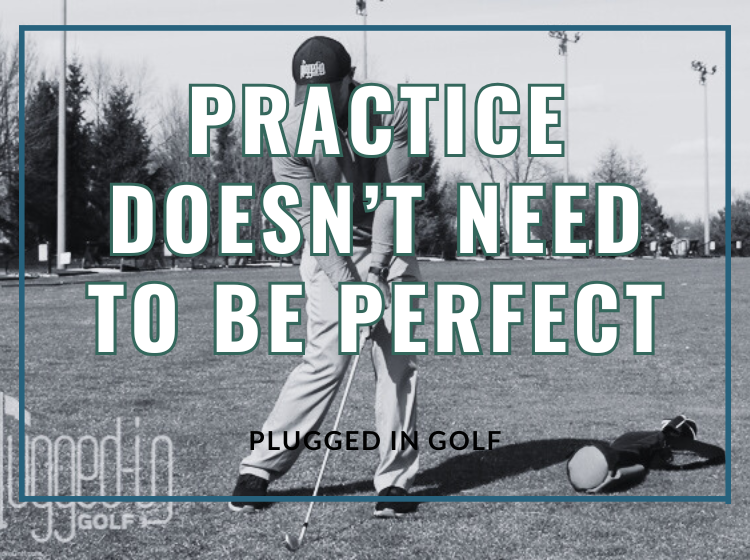
Trade In Your Anxiety for Ownership
When I was teaching golf full-time, the most common emotion that I noticed in my students was anxiety. This wasn’t unique to me; it was true of every teacher I knew. Students are anxious because they’re trying so hard to get things right, but the much surer path to playing better is owning your swing. In this lesson, I’ll explain how you can start walking down that road.
This Lesson Is For You If:
You want a more consistent, repeatable swing
You jump around from one swing thought to another
Conformity Is Killing Your Swing
Golf is a sport of conformity. Between the dress codes and rules for etiquette, no other sport I know gets people so anxious about doing the “right” thing. This extends to the golf swing: golfers talk about trying to “fix” their swing as if there’s a Platonic Ideal for what it should be. That idea of perfection also bleeds into how we talk about our swing – most people think there are right and wrong things to feel and words to use.
If you’re going to own your swing, you need to set aside these ideas. There is no perfect way to swing a golf club. There is not a right or wrong thing to feel or way to describe it.

Pay Attention to Yourself
Most golfers have no idea what their body is doing during the golf swing. This isn’t because they’re bad athletes; it’s because they’re overly concerned with the result of every swing, mistakenly thinking that other people care about it.
The first step toward owning your swing is paying attention to yourself. The next time you’re at the range, put the focus on your body and make swings. Don’t try to change things, don’t try to control things, just swing the club, and note what you feel. Is there pain anywhere? Where do you feel exertion? Is there tension or restriction somewhere? What makes a swing feel good or bad? And, finally, what feelings are connected to good results?
I’ll offer two keys to keep in mind when you’re going through this process. First, go slow. If you hit a stinker, don’t be in a hurry to race away from those feelings and hit another. No one cares about your bad shot, and racing to the next one just cheats you out of the chance to learn. Second, don’t judge. This is not an exercise in self-flagellation or evaluating your abilities. You’re just here to learn what your swing feels like. Those feelings are not good or bad, they just are. Take note of them and keep going.

Find Your Own Words
After you’ve spent some time gaining awareness, you can start to put things into words and creating cues. The biggest thing to remember here is that your words don’t have to make sense to anyone else. You can say that your swing works best when you feel some “bing” in your left elbow. You can strive to put some “oof” into your right hip. As long as you know the sensation that connects with those words, they’re good cues.
Once you have those cues, write them down. These are your swing feels, and they’ll be your North Star when your swing gets lost. I have a page of notes on my phone that I refer to whenever I start to feel like golf is a foreign concept. My notes likely wouldn’t make sense to anyone, and they wouldn’t help most players even if I “translated” them, but they don’t need to: they’re my swing feels.
Feelings Change
One of my favorite things about my notes is the way that they’ve evolved. In a way, it’s like a history of my golf swing. I can look at the first note and remember when I needed to emphasize that sensation. Being a gear nerd, I can also remember what clubs I was playing when I had those feelings. Then I can look forward and see how it has changed. “This is the note I made after that lesson…this is the cue I used to stop hitting shanks [more on that HERE].”
I say all of this to let you know that your feelings and cues will change over time. That doesn’t mean you should hopscotch from one swing thought to another, but it does mean that your body may feel or react differently from one day or week to the next. For example, I’ve been working on “opening” the club more early in my swing. Though I have stuck with that thought for several months, some days I need it more than others. Some days it feels easy and natural, some days it feels hard and laborious.

The Ultimate Goal
Your target in this journey is not a perfect swing. Even if the perfect swing did exist, you couldn’t expect to own it for more than a moment. The goal is awareness and understanding. If you go to the course with a knowledge of what your swing feels like and how to keep it on track, you’ll be well on your way to playing your best golf.
Further reading: I didn’t write this as a companion piece to Andy Hayes’s recent lesson, but it turned out that way. Check out his lesson HERE
He founded Plugged In Golf in 2013 with the goal of helping all golfers play better and enjoy the game more.
Matt lives in the northwest suburbs of Chicago with his wife and two daughters.
- SuperSpeed Speed Sticks Pro Review - February 18, 2025
- PING G440 MAX Driver Review - February 17, 2025
- ACCRA Shogun Shaft Review - February 14, 2025
















2 Comments
Over my 50+ years golfing, self taught, I have learned that complements on “what a good swing you have” have no bearing on whether I’m hitting good shots or not. Golf usually comes easier when I just stand up to the ball and make a natural swing with a clear mind. Learning and owning your own swing is great advice and much preferable for amateurs who don’t have hours of range time and play every day like the pros. Thanks for pointing us in the right direction Matt. Golf is more fun this way.
Wow!!! You have spoken truth here! Very well done!